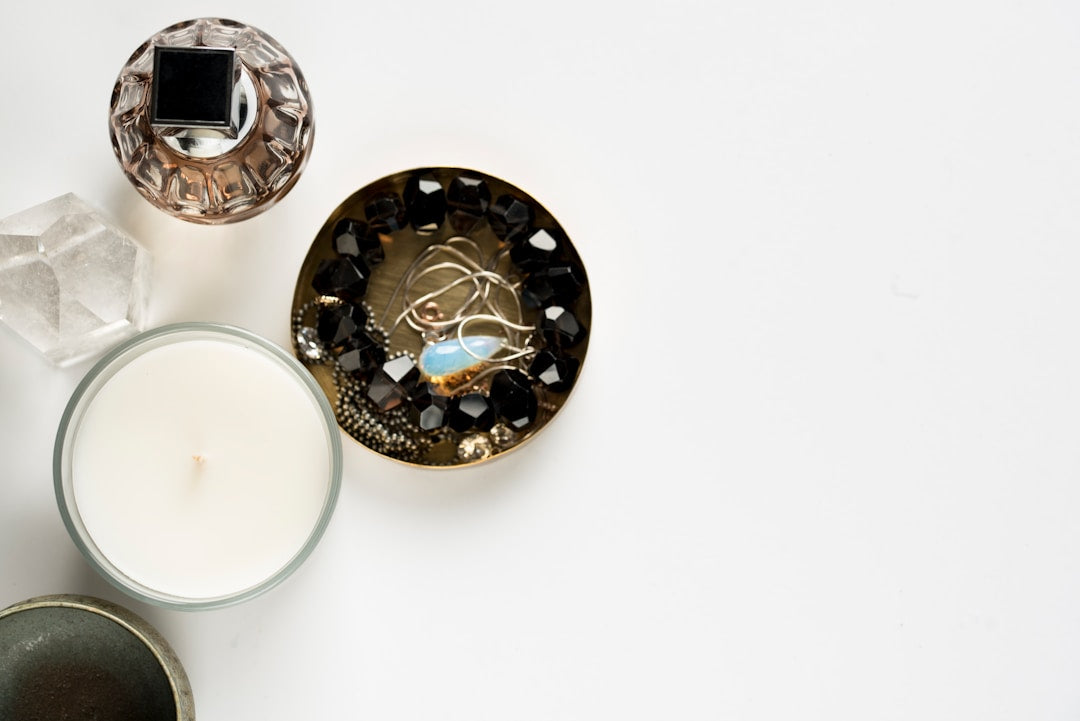Understanding the Durability of Men's Brass Jewelry
Brass has carved a significant niche in men's style, offering a warm, vintage-inspired aesthetic that stands out. From bold brass necklaces to statement rings, it provides an accessible yet sophisticated option. But a common question arises for potential buyers and gift-givers: how long does brass jewelry last? It's a valid concern, as durability is key for accessories meant for daily wear or special occasions.
The answer isn't a simple number of years. The lifespan of your brass piece depends heavily on several factors, including the brass alloy itself, how you wear it, environmental conditions, and, crucially, how you care for it. Understanding these elements is essential to knowing what to expect from your brass accessories.
What Exactly is Brass and Why Does it Matter for Longevity?
Before diving into lifespan specifics, let's clarify what brass is. Brass isn't a pure element; it's an alloy, primarily composed of copper and zinc. The ratio of copper to zinc can vary, creating different types of brass with slightly different properties, including colour variations and hardness. For instance, cartridge brass (70% copper, 30% zinc) is common in jewelry for its good balance of workability and strength.
This composition is key to understanding brass's behaviour. Copper, the main component, is known for its durability but also its tendency to oxidize – react with oxygen and other elements in the environment. This oxidation process is what leads to tarnish or patina, a characteristic often associated with brass. Zinc contributes to the alloy's strength and corrosion resistance, but the copper content ultimately dictates much of its aging process. You can learn more about its specific makeup in our article, what is brass made of.
So, when asking how long does brass jewelry last, we need to consider both its structural integrity (how long it physically holds together) and its aesthetic appearance (how it changes colour over time).
Factors Influencing How Long Brass Jewelry Lasts
Several key factors directly impact the longevity and appearance of your brass jewelry:
- Frequency of Wear: Like any accessory, the more you wear a brass piece, the more exposure it has to elements like friction, sweat, and environmental pollutants. Daily wear will naturally accelerate the aging process compared to occasional use.
- Your Body Chemistry: Everyone's skin pH and sweat composition are slightly different. Some individuals find that their skin reacts more readily with the copper in brass, potentially accelerating tarnish or causing the common (and harmless) green tint on the skin.
- Environmental Exposure: High humidity, saltwater air, and pollutants can speed up the oxidation process. Consistently exposing brass jewelry to moisture is one of the fastest ways to encourage tarnish.
-
Contact with Chemicals: Everyday substances can affect brass. This includes:
- Lotions, perfumes, and hairsprays
- Soaps and detergents
- Chlorine (pools, hot tubs)
- Acidic foods or liquids
- Care and Maintenance Routine: This is perhaps the most significant factor you can control. Regular cleaning and proper storage dramatically extend the appealing lifespan of brass. Neglect leads to faster, heavier tarnishing.
- Type of Brass and Finish: While most jewelry brass is durable, slight variations in alloy exist. Furthermore, some brass pieces might have a protective lacquer coating applied. This coating can prevent tarnish initially, but if it wears off unevenly, it can lead to patchy discoloration. Uncoated brass will tarnish more uniformly. Gold-plated brass has its own lifespan considerations, dependent on the plating thickness and wear.
The Real Answer: Structural vs. Aesthetic Lifespan
Structurally, solid brass is a robust and durable metal. It doesn't rust like iron or steel. Barring extreme circumstances or physical damage (like being crushed or severely bent), a well-made piece of solid brass jewelry can physically last for decades, potentially even generations. It's a sturdy alloy often used in hardware, musical instruments, and plumbing fixtures for its resilience.
However, when most people ask "how long does brass jewelry last?", they're often thinking about its appearance. Will it stay bright and shiny? The answer here is different. Brass will change colour over time due to oxidation. This isn't a sign of poor quality; it's the inherent nature of the metal.
This change manifests as tarnish (a darkening or dulling) or patina (which can range from deep browns to greens, depending on the specific alloy and environmental conditions). The speed and extent of this change depend on the factors mentioned above.
Embracing Patina vs. Maintaining Shine
A crucial aspect of brass ownership is understanding tarnish and patina. For many, the development of a unique patina is a desirable characteristic, lending the piece a distinguished, vintage, or rugged look. It tells a story of wear and time. Many men specifically choose brass for this aging property.
Conversely, others prefer the bright, warm gleam of polished brass. The good news is that, unlike rust which degrades the metal, brass tarnish is typically a surface phenomenon. It can usually be removed with proper cleaning and polishing techniques, restoring the original shine.
It's important to note the potential for brass to cause a temporary green mark on the skin. This is a harmless reaction between the copper in the brass, acids in your sweat, and oxygen. It's more likely in humid conditions or if the jewelry is worn tightly. While some find it bothersome, it's easily washed off the skin and isn't an allergic reaction for most people. Curious about this effect? Read our explanation on does brass turn your skin green.
Maximizing Your Brass Jewelry's Lifespan: Care is Key
If you want your brass jewelry to look its best for as long as possible – whether that means preserving its shine or managing its patina – proper care is non-negotiable. Here’s how to significantly influence how long your brass jewelry lasts aesthetically:
Regular Cleaning & Maintenance
- Wipe Down After Wear: Use a soft, dry cloth (like microfiber) to wipe down your jewelry after each wear. This removes oils, sweat, and initial traces of buildup before they set in.
- Gentle Washing: For more thorough cleaning, use lukewarm water and mild dish soap. Gently lather, rinse thoroughly, and – crucially – dry completely with a soft cloth. Trapped moisture is brass's enemy.
-
Targeted Tarnish Removal: For heavier tarnish:
- Lemon Juice/Baking Soda Paste: Create a paste, apply gently with a soft cloth or toothbrush, let sit for a few minutes (not too long!), rinse thoroughly, and dry completely. Use caution as lemon juice is acidic.
- Vinegar/Salt/Flour Paste: Similar application to the lemon juice paste. Ensure thorough rinsing and drying.
- Commercial Brass Cleaners: Products like Brasso or Wright's Brass Polish are effective but follow instructions carefully. Ensure they are suitable for jewelry and rinse well. Always test on an inconspicuous area first. Get detailed steps in our guide on how to clean brass jewelry.
- Polishing: Use a dedicated brass polishing cloth to restore shine after cleaning or for light touch-ups between washes.
Preventative Measures for Longevity
- Remove Before Water Exposure: Always take off brass jewelry before showering, swimming (chlorine and saltwater are harsh), washing dishes, or entering hot tubs.
- Last On, First Off: Put your brass jewelry on *after* applying lotions, colognes, hairsprays, or sunscreens. Take it off *before* removing clothes to avoid snagging.
- Avoid Strenuous Activity: Remove brass rings or bracelets before exercising or doing manual labor to prevent physical damage and excessive sweat exposure.
- Proper Storage: This is critical. Store brass pieces individually in small, airtight plastic bags or in a jewelry box with anti-tarnish lining or strips. Reducing air exposure significantly slows oxidation. Don't just toss it on a nightstand.
- Consider Sealants (Use with Caution): Clear jewelry lacquer or even clear nail polish can be applied to create a barrier against air and moisture. However, this coating can wear off unevenly over time and may need reapplication. It can also alter the feel of the jewelry. This is more common for preventing skin discoloration than for preserving the metal itself long-term.
Brass Durability in Perspective: Compared to Other Metals
How does brass stack up against other popular men's jewelry metals?
- Stainless Steel:** Generally more resistant to tarnish and scratches than brass. Offers a cooler, more modern look. Requires less maintenance for shine but lacks the warm tone and patina potential of brass.
- Sterling Silver:** Also tarnishes (turns black) but is often considered a precious metal. Requires regular polishing similar to brass to maintain shine. Can be softer than some brass alloys.
- Gold (Solid):** Highly resistant to tarnish, considered precious and holds significant value. Much more expensive than brass. Lifespan is excellent. Brass vs. Gold offers different aesthetics and price points.
- Titanium/Tungsten:** Extremely hard, scratch-resistant, and hypoallergenic. Very modern look, often greyish. Doesn't tarnish but lacks the classic warmth of brass.
Brass offers a unique combination of vintage appeal, affordability, and satisfying heft. Its durability is excellent, provided you accept or manage its natural tendency to patina.
Is Brass a Good Choice for Long-Lasting Men's Jewelry?
Absolutely. When considering how long brass jewelry lasts, remember its inherent structural strength. It's a resilient alloy capable of enduring years, even decades, of wear.
The aesthetic journey of brass, involving potential tarnish and patina, is part of its character. Whether you choose to meticulously maintain its shine or embrace the evolving patina, the longevity is largely in your hands through consistent care.
For the man seeking distinctive style, a connection to vintage aesthetics, and a durable accessory without the high cost of precious metals, brass is an excellent and long-lasting option. Its ability to be restored and its potential to develop character over time make it a rewarding material for men's jewelry. Considering its pros and cons, many find that brass is a good metal for men's jewelry investments that blend style and substance.
Ultimately, with mindful wear and regular maintenance, your brass jewelry won't just last – it will evolve with you, developing a character unique to your journey.

